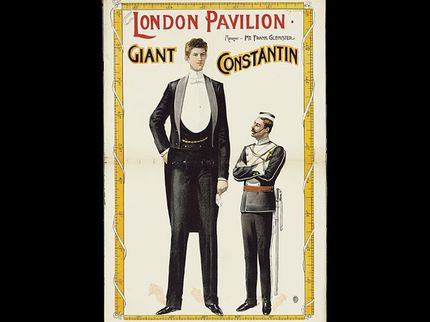From ornate mourning attire to post-mortem photography, it’s clear that the Victorians were obsessed with death and dying. Yet their obsessions extended to the peculiar side of life as well.
A variety of factors fueled this fascination with all that the world had to offer—from the rise of photography to Darwin’s theory of evolution. Little wonder, then, that touring attractions of the exotic and sideshows that displayed the human form in all its variety and deviation flourished during the Victorian era.
The maestros behind these touring attractions were well aware of what their spectators wanted, and set out to prove that their particular sideshow was the biggest, strangest, and freakiest of the bunch. Perhaps the best-known barker of the era was P.T. Barnum, a man who spun elaborate—and often entirely fabricated—backstories for his freaks in order to draw an audience.
But the impresarios weren’t the only ones making money. Victorians were so taken with the stars of the shows that freak show paraphernalia became a hot commodity. Freak trading cards were wildly successful and some performers – such as Isaac “The American Human Skeleton” Sprague – even composed biographies to be printed in pamphlets along with their pictures and sold at each performance. While profit was split between showmen and performers, the entertainers often fared better than their management.

The most popular attractions became full-blown stars with lucrative careers. Charles Sherwood Stratton, better known as General Tom Thumb (pictured above), was an international celebrity under the management of P.T. Barnum. He twice appeared before Queen Victoria, met President Lincoln at the White House, and lived a life of luxury in New York City before his death in 1883.
The reign of the freak show waned at the dawn of the 20th century; by the 1950s, it had all but disappeared. A number of factors led to its decline – including shifts in public interest, charges of exploitation by journalists like Henry Mayhew, and the rise of television.
Something so intriguing, though, will never fade entirely. Curiosity about the freak show tradition has bounced back in recent years. Today, you can get your freak show fix at the Coney Island Ten-in-One show or even catch the freak-themed season of American Horror Story: Freak Show.
Step right up for a peek into our stunning collection of posters and photos from 19th century freak shows in the gallery below!
1. Barnum & Bailey freak show poster

An 1898 Barnum & Bailey poster, featuring Siamese twins and a bearded lady among others.
2. Krao Farinia, aka “The Missing Link”

An 1887 poster advertising Krao Farini as “The Missing Link.” Freak show audiences were especially intrigued by acts featuring Darwinian themes. Krao displayed ape-like qualities, including flexible limbs and a hairy body. She began performing at the age of six and continued as a Barnum attraction until her death in 1926.
3. Young Krao

Krao Farini as a child, circa 1885.
4. Frank “The Giant” Winkelmeier

A poster advertising Franz Winkelmeier, known as “The Giant.” Winkelmeier is depicted beside a soldier of Emperor Wilhelm – the Emperor was known to have vertically gifted soldiers, yet they were dwarfed by the Giant who stood at 8’9″.
5. Julius Koch, “The Giant of Constantin”

A poster advertising “The Giant of Constantin,” Julius Koch, circa 1900. Koch’s height is estimated at 8’0.8″, but cannot be confirmed as his legs were amputated when he developed gangrene. Koch starred in the short film The Giant Constantin, released in 1902. He passed away in the same year. His skeleton is preserved in the Museum of Natural History in Mons, Belgium.
6. The Kostroma people from the forests of Russia

A poster advertising the Hirsute Kostroma people from the primeval forests of central Russia, 1874. Similar to the famed Dog-faced Man, the Kostroma people were notable for their hair-covered faces.
7. Miss C. Heenan

A poster advertising Miss C. Heenan, “The Great American Prize Lady,” circa 1868. Heenan was known as the “heaviest female living,” weighing in at approximately 560 pounds.
8. Jullia Pastrana, aka “The Nondescript”

A poster advertising Julia Pastrana, known as “The Nondescript.” Pastrana suffered from hypertrichosis, causing her to be covered in long, thick hair and to have exaggerated facial features. She toured England in the 1840s and 50s and her mummified body continued to attract an audience after her death.
9. Jullia Pastrana, aka “The Nondescript”

Julia “The Nondescript” Pastrana, circa 1850.
10. P.T. Barnum and Charles Stratton

A photo of P.T. Barnum and Charles Stratton, known as “General Tom Thumb,” circa 1850. Stratton was a distant cousin of Barnum?s and was taught from very early on to be a performer. Barnum instructed the two-foot-tall Stratton to lie about his age, claiming to be eleven rather than his true age of five, aiming to exaggerate Stratton?s tiny stature. General Tom Thumb was a successful act for both the performer and the showman.
11. The Fiji Mermaid

A poster advertising the Fiji Mermaid, 1822. American Sea Captain, Samuel Barrett Edes, bought the faux mermaid – a young ape’s torso and head attached to the tail of a large fish – from Japanese sailors in 1822. It was first displayed in London. The mermaid later changed hands and was exhibited by P.T. Barnum in 1842. Due to an elaborate backstory, the exhibit was extremely successful.
12. Barnum & Bailey freak show poster

An 1898 Barnum & Bailey poster, advertising the Coney Island Water Carnival. New York’s Coney Island continues to host sideshow performances and is home to one of the world’s last Ten-in-One freak shows.
